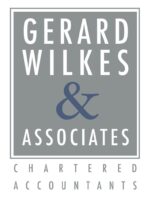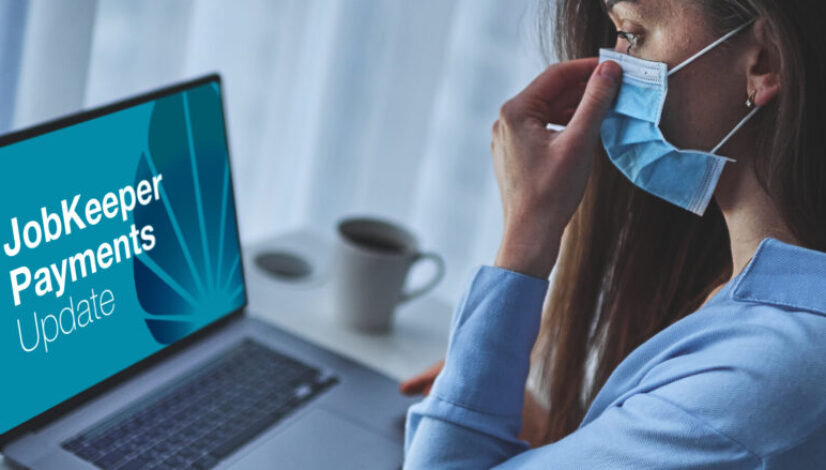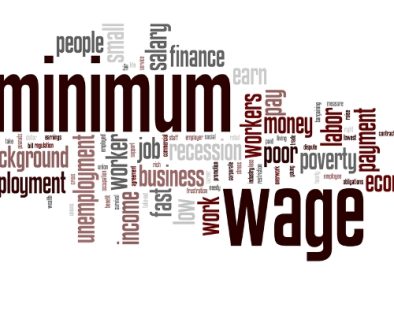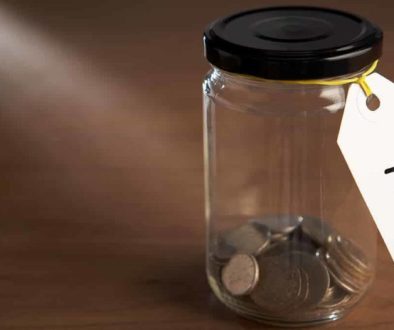Job Keeper changes – a detailed overview
New rules for the extension of the JobKeeper Payment (JobKeeper 2.0)
Job Keeper changes – a detailed overview to give you the up to date information and changes.
On 21 July 2020, the Government announced that the JobKeeper Payment (‘JKP’) would be extended by a further six months to 28 March 2021 on a scaled-back basis, with businesses being required to reassess their eligibility to remain in the scheme.
The Coronavirus Economic Response Package (JobKeeper Payments) Amendment Bill 2020 (which received Royal Assent on 3 September 2020) gave effect to the extension of the scheme to 28 March 2021 and also made some adjustments to the existing Fair Work Act 2009 (‘FWA’) concessions that were put in place when the JKP scheme was originally implemented.
| TAX TIP – Changes to the FWA concessions for ‘legacy employers’
As employers will be required to re-assess their eligibility for the JobKeeper scheme whereby they must satisfy a new and modified version of the decline in turnover test, some employers who previously qualified for the scheme may no longer qualify after 27 September 2020 (i.e., the original end date of the scheme). |
Subsequently, the Coronavirus Economic Response Package (Payments and Benefits) Amendment Rules (No.8) 2020 legislative instrument (the ‘Amending Rules’) was registered on 15 September 2020 (effective from 16 September 2020), setting out the new rules that will govern how the scheme will operate in the extension period (i.e., for JobKeeper 2.0).
Importantly, these Amending Rules do not replace the existing JKP rules, rather, they are an amendment to the existing rules to incorporate the previously announced dual payment rate system, the adjustments to employee eligibility relating to the relevant dates of employment (i.e., including both 1 March 2020 and 1 July 2020) and the new modified decline in turnover test.
This document does not consider the implications for ACNC-registered charities or religious practitioners
1. Extension of the JKP to 28 March 2021
The extension of the JKP by six months to 28 March 2021 will see the scheme tapered with respect to both the December 2020 and March 2021 quarters for all eligible employees and business participants to provide appropriately targeted assistance. In addition, a two-tiered payment system will apply based on hours of work or active engagement.
Importantly, employers and entities with eligible business participants are able to enrol for the JKP for the extension period even where they have not previously enrolled, subject to meeting all the new and existing eligibility criteria (e.g., a business was carried on in Australia on 1 March 2020).
To qualify for the JKP after 27 September 2020 (i.e., for JobKeeper 2.0) businesses must satisfy two separate decline in turnover tests, being:
- the original projected GST decline in turnover test – adjusted under the Amending Rules to include a comparison of the projected GST turnover of any of the calendar months from March 2020 to December2020 (or any of the June 2020, September 2020 or December 2020 quarters) against the actual GST turnover of the relevant 2019 comparison period; and
- the new actual GST decline in turnover test – refer below
However, whilst entities are technically required to satisfy both the original projected GST decline in turnover test and also the additional new actual GST decline in turnover test from 28 September 2020, practically speaking, this may be a moot point. This is because:
- entities that are currently in the JobKeeper scheme would have already satisfied the original projected GST decline in turnover test (and are not required to satisfy it again); and
- entities entering the scheme for the first time would generally also satisfy the original projected GST decline in turnover test if they can demonstrate a fall in their actual GST turnover for a relevant quarter (i.e., either the September 2020 or the December 2020 quarter, as applicable).
Variations may occur in the calculation of the required projected or actual GST decline in turnovers (e.g.,the sale of capital assets such as business premises are included in actual GST turnover, but not included in projected GST turnover). Refer to the ATO’s Law Companion Ruling LCR 2020/1.
With respect to the new actual GST decline in turnover test, the Commissioner may, by legislative instrument, determine that certain supplies, or classes of supplies, are to be treated as being wholly or partly made at a particular time. For this purpose, the Commissioner has registered Coronavirus Economic Response Package (Payments and Benefits) (Timing of Supplies Made and Decline in Turnover Test) Rules 2020 (No.1), which stipulates that a supply must be treated as being made, or partly made, in a relevant test period to the extent that any GST payable on the supply would be attributed to that test period. Importantly, the basis of accounting to be used for this purpose (i.e., cash or accruals) will be dependent on the entity’s circumstances (this will broadly be the basis for which the entity is registered for GST for).
2. Decline in turnover test – the new actual GST decline in turnover test
The new actual GST decline in turnover test only applies with respect to the six-month extension of JKP (i.e., JobKeeper 2.0) and is broken up into two separate extension periods, as follows:
(a) Extension Period 1 – applies to JobKeeper fortnights that start on or after 28 September 2020 andend on or before 3 January 2021. The additional test will be satisfied where the entity’s actual GSTturnover has declined by the required percentage (i.e., either 30% or 50%) for the quarter ending 30 September 2020, relative to its September 2019 quarter.
(b) Extension Period 2 – applies to JobKeeper fortnights that start on or after 4 January 2021 and end on or before 28 March 2021. The additional test will be satisfied where the entity’s actual GST turnover has declined by the required percentage (i.e., either 30% or 50%) for the quarter ending 31 December 2020, relative to its December 2019 quarter.
Effectively, this test will require a business to have had a decline in its actual GST turnover for the September 2020 and/or the December 2020 quarter (as applicable), relative to the actual GST turnover of its comparable quarter in 2019 (being September 2019 and December 2019 respectively), unless an alternative period is determined by the Commissioner (refer below).
For the new additional test, the applicable rate of decline in turnover required to qualify for the JKP in the extension periods is determined using the existing rules (i.e., 50% for entities with an aggregated turnover of more than $1 billion and 30% for entities with an aggregated turnover of $1 billion or less). This should be re-assessed when applying the new additional test as it may not be the same rate that was used in applying the original decline in turnover test (e.g., where there has been a substantial change in the entity’s
turnover since the original test was applied).
TAX TIP – Additional test must be satisfied separately for each period
In addition to satisfying all the other qualifying conditions, the new actual decline in turnover test must be satisfied separately for Extension Period 1 and Extension Period 2. Importantly, an entity is not excluded from qualifying for the JKP in Extension Period 2 simply because it did not qualify for the JKP in Extension Period 1 (or even where it did not qualify for the original JKP scheme prior to 28 September 2020). In other words, the new additional test for each period is not contingent on a business having qualified for any, or all, of the earlier periods.
Qualifying for the first time under JobKeeper 2.0
A business may not have participated in the original JKP scheme (i.e., between 30 March 2020 and 27 September 2020). However, if the business experiences the requisite decline in actual GST turnover for the September 2020 quarter, it may qualify for JKPs from 28 September 2020 to 3 January 2021 (i.e., Extension Period 1 of JobKeeper 2.0).
Note, as the business has not previously participated in the JKP scheme, it will also need to consider if it satisfied the original projected GST turnover test (as modified) as well as all the other eligibility criteria (e.g., business was being carried on in Australia on 1 March 2020).
For JobKeeper fortnights beginning on or after 4 January 2021 (i.e., Extension Period 2 of JobKeeper 2.0), the business will need to test its actual GST decline in turnover with reference to the December 2020 quarter to determine if it continues to qualify for JKPs.
Refer to Example 1 in the Explanatory Statement to the Amending Rules.
Requalifying under JobKeeper 2.0
A business that originally qualified for the JKPs prior to 28 September 2020 may not qualify for Extension Period 1 of JobKeeper 2.0 (e.g., because it did not meet the actual decline in turnover test for the September 2020 quarter).
However, if they have the requisite decline in actual GST turnover for the December 2020 quarter (i.e.,when compared to the corresponding quarter in 2019) the business may re-qualify for payments under Extension Period 2 of JobKeeper 2.0.
Refer to Example 2 in the Explanatory Statement to the Amending Rules.
3. Wage condition for employees
From 28 September 2020, a two-tiered payment system will apply with respect to JKPs. In addition, the amount of the JKP will also be dependent on the fortnight in question, as set out below:
| Extension Period 1 | Extension Period 2 | |
| Higher Rate | $1,200 per fortnight | $1,000 per forntight |
| Lower Rate | $750 per fortnight | $650 per fortnight |
The payment rate applicable to an employee is determined by reference to the actual hours the employee worked, had paid leave and paid absence on public holidays over an applicable ‘reference period’ (refer below). Specifically, the applicable rate is determined as follows:
• Higher rate – If an employee’s total hours were 80 hours or more for the employer over an applicable 28-day reference period, then the employer is entitled to the higher rate in respect of that employee.
• Lower rate – If the total hours of work and equivalent paid leave are less than 80 hours over the applicable 28-day reference period, the lower rate applies.
It is the responsibility of the employer to determine the number of hours that count towards the threshold for an eligible employee, based on existing records that are already maintained in respect of that employee.
3.1 ‘Reference periods’ for employees
There are two standard reference periods for all employees, which consists of the 28-day periods ending at the end of the most recent pay cycle for the employee ending before:
• 1 March 2020 – which is the original reference date; or
• 1 July 2020 – which is the additional reference date for conditions that apply to newly eligible employees of qualifying employers for Job Keeper fortnights starting on or after 3 August 2020.
| TAX WARNING – Employers cannot choose the reference period These reference periods effectively cover the last two consecutive fortnightly pay periods (or the last four consecutive weekly pay periods) ending prior to 1 March 2020 or 1 July 2020. Importantly, both reference periods are applicable to all eligible employees, irrespective of whether their eligibility is based on the 1 March 2020 or the 1 July 2020 requirements.Also, employers do not have a discretion to choose which reference period to apply and must have regard to any applicable reference period for any employee that results in the higher rate applying. In other words, the employer is required to apply the most beneficial reference period for their employees. Refer to Example 4 of the Explanatory Statement to the Amending Rules. |
Where these standard reference periods are not considered to be a suitable reference period for a class of employees, the Commissioner has the power to determine, by legislative instrument, an alternative reference period for the hours worked test for particular employees. Refer to Coronavirus Economic Response Package (Payments and Benefits) Alternative Reference Period Determination 2020.
Where the relevant pay cycle for an employee is longer than the 28-day reference period (such as a monthly pay cycle) then a pro-rated calculation is used to determine the applicable hours of the longer pay cycle that are attributable to the relevant 28-day period. Further reference can be made to a worked calculation in Example 5 of the Explanatory Statement to the Amending Rules.
Employees who already qualify under the standard reference period will not lose eligibility if they would not meet the relevant threshold under an alternative reference period determined by the Commissioner (if an alternative reference period is determined in respect of the employees). By the same token, employers must always consider whether the higher rate might apply under an alternative reference period, where an employee is not otherwise eligible for the higher rate under a standard reference period. As a result, employers must be aware of any applicable alternative reference periods that are determined by the Commissioner, if, or when, they become available.
3.2 Commissioner’s power to determine higher rate applies
In circumstances where the Commissioner is satisfied that the total hours that count towards the threshold are not readily available, the Commissioner has the power to determine, by legislative instrument, methods for identifying if a class of employees qualify for the higher rate.
For example, this would apply if an employer does not have any record, or has incomplete records, of the hours worked (or paid leave or paid absences on public holidays) by its employee during a period. In contrast, this power would not be exercised if a class of employees was only employed for part of the reference period or took unpaid leave during part of this period (in which case, the Commissioner may separately determine an alternative reference period instead – refer above).
From a practical perspective, it is anticipated that this power will be exercised by the Commissioner in assisting employers who are more likely to have issues working out the number of hours worked by an employee.
This may be the case for employees who are not remunerated based on an hourly rate or contracted number of hours (e.g., employees who undertake duties principally on a commission, piece rate or similar basis over the reference period and their remuneration is not necessarily proportional to the actual hours worked in a particular period. Refer to Coronavirus Economic Response Package (Payments and Benefits) Higher Rate Determination 2020.
4. Eligible business participants
Whilst the same payment rates also apply to qualifying entities that have nominated an eligible business participant, the test to determine whether the higher rate or the lower rate applies is based on the hours of active engagement in the entity’s business.
This will require a consideration of the hours that the business participant was actively operating the business or undertaking specific tasks in business development and planning, regulatory compliance or similar activities in the applicable reference period.
As business participants are not employees, reference periods for business participants are not based on pay cycles, rather, the standard reference period is the calendar month of February 2020. The Commissioner also has the power to set an alternative reference period where the month of February 2020 is not an appropriate reference period for the business participant.
From 28 September 2020, qualifying entities are entitled to the higher rate of JKP in respect of an eligible business participant if:
- the total hours of active engagement by the business participant in the business of the entity over any applicable reference period (i.e., generally February 2020) were 80 hours or more; and
- the business participant has made a declaration in the approved form to the entity (or the Commissioner, if the business participant is a sole trader) that their total hours of active engagement are 80 hours or more for the applicable reference period.
Conversely, the lower rate of JKP will apply in respect of an eligible business participant if they have less than 80 hours of active engagement in the business or they do not provide a declaration to the entity (regardless of the hours of active engagement).
TAX WARNING – Onus to provide evidence of active engagementImportantly, entities and business participants must be in a position to reasonably demonstrate the basis on which they have determined that a business participant was actively engaged in the business for the required number of hours in the month of February 2020. |
5. Notification requirements
To qualify for the JKP, entities are required to comply with separate notification requirements for their eligible employees and/or business participants. As most of these notification requirements must be done in the approved form, it is anticipated that the ATO will release the appropriate forms to be completed by eligible entities in due course.
Employees
From 28 September 2020, employers must provide details relating to eligible employees and also the applicable rate for which they are eligible in respect of their employees as part of the information that must be provided to the Commissioner. There will be no requirement to notify the Commissioner a second time for JKPs relating to Extension Period 2 as no further testing of the hours of work is required to determine the rate of payment.
Where an employer fails to notify the Commissioner of the applicable payment rate in respect of an employee for JobKeeper fortnights commencing on or after 28 September 2020, the employer is not eligible for JKPs until a valid notification is made. This applies regardless of whether the employer has been receiving JKPs in respect of the employee prior to 28 September 2020.
In addition, employers must also notify their employees in writing within seven days of advising the Commissioner of the payment rate applicable to the employee.
Eligible business participants
Entities must notify the Commissioner (in the approved form) about whether the higher or the lower rate applies to an eligible business participant for fortnights commencing on or after 28 September 2020. With the exception of sole traders, entities must also notify the eligible business participant within seven days once such a notice is provided to the Commissioner.
Interestingly, despite the requirement to give a declaration to the Commissioner specifying the applicable payment rate being a condition of eligibility for business participants, there is no obligation to provide the declaration within a specified period of time. However, with that being said, an entity is only entitled to JKPs in respect of a business participant once the declaration has been provided in the approved form.
Our team at Gerard Wilkes & Associates are here to help. If you have any questions regarding this article, or would like to discuss your taxation matters further, please contact us at https://www.wilkes.com.au/contact-us/ or call our office 07 5532 1733.
Article referenced from: National Tax & Accountants’ Association Ltd




